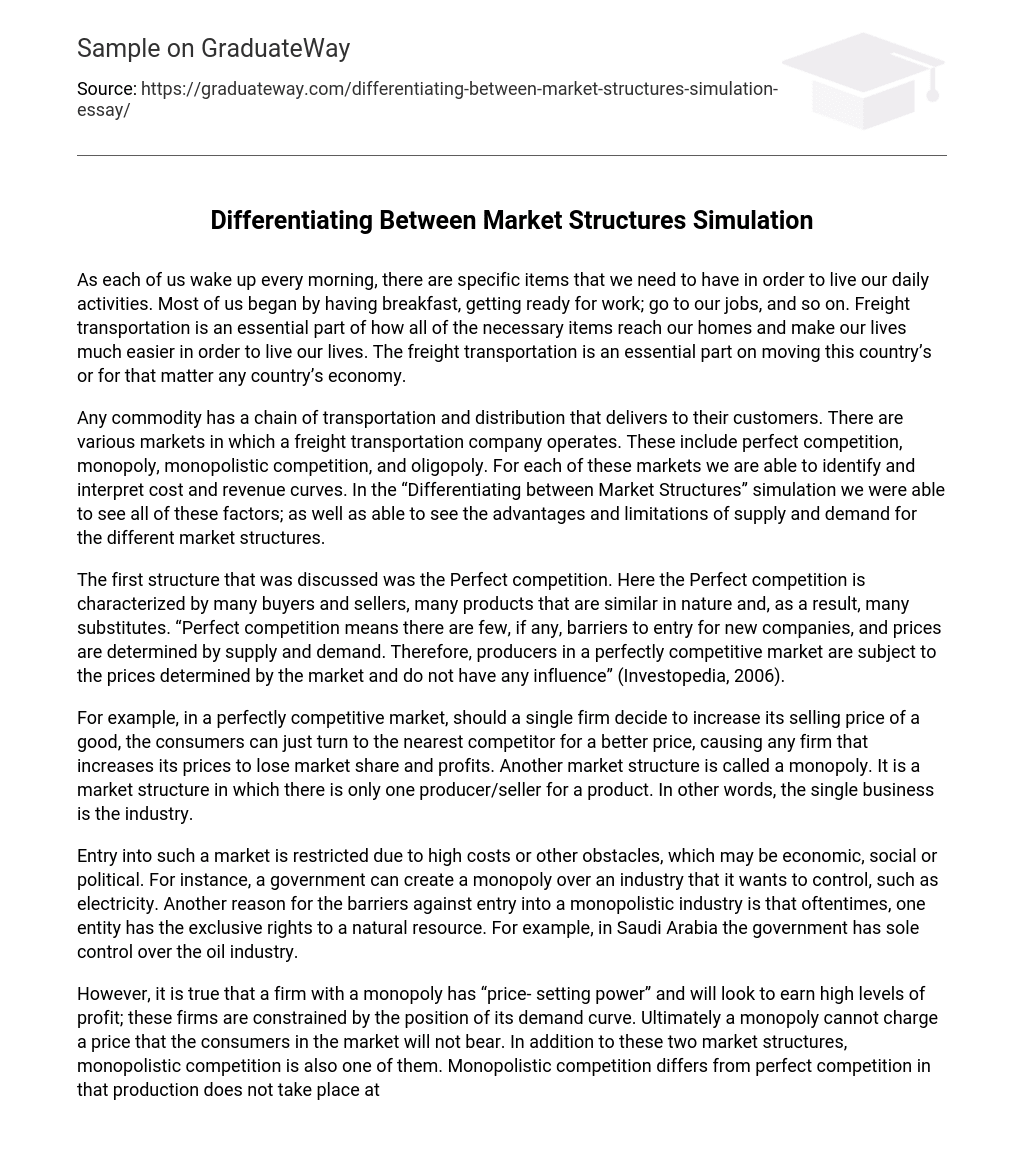Our daily routines, including breakfast, getting ready for work, and commuting, rely on certain items every morning. Freight transportation plays a vital role in delivering these necessary items to our homes. It not only makes our lives easier but also contributes significantly to any country’s economy.
Transportation and distribution chains are essential for delivering commodities to customers. A freight transportation company operates in various markets, including perfect competition, monopoly, monopolistic competition, and oligopoly. Each market has distinct cost and revenue curves that can be identified and interpreted. The “Differentiating between Market Structures” simulation allowed us to observe these factors and comprehend the advantages and limitations of supply and demand within each market structure.
The topic initially discussed was Perfect competition, which is characterized by a significant number of buyers and sellers. It also involves a diverse range of similar products, resulting in multiple substitutes being available. Investopedia (2006) defines Perfect competition as having minimal barriers for new companies to enter the market, with prices being determined by supply and demand. Consequently, producers within this type of market are bound by the prices set by the market itself and have no control over them.
In a perfectly competitive market, if one firm increases its selling price, consumers have the option to switch to a competitor offering a better price. As a result, any firm that raises prices experiences a decline in market share and profits. Conversely, a monopoly arises when there is only one producer or seller for a particular product, effectively making that sole business the entire industry.
Entering a market can be constrained by various barriers, including high costs and obstacles of economic, social, or political nature. For instance, governments may create monopolies in industries they aim to control, like electricity. Furthermore, barriers can arise when a sole entity possesses exclusive rights to a natural resource. In Saudi Arabia, the government has complete authority over the oil industry.
However, a firm with a monopoly possesses the power to set prices and aims to earn high profits. However, the demand curve limits its ability to charge prices that consumers are unwilling to pay. Besides monopolies, monopolistic competition is also a market structure. The key difference between monopolistic competition and perfect competition is that production in monopolistic competition does not occur at the lowest possible cost, resulting in excess production capacity for firms. Despite this difference, the characteristics of monopolistically competitive markets are almost identical to perfect competition, except for mixed products and a significant amount of non-price competition. This enables the company to have some influence over the market, as it can increase prices without losing all customers due to brand loyalty – unlike in perfect competition where demand is perfectly elastic (Investopedia, 2006).
However, this situation of no barriers to entry does not last long. Other firms will enter the market when they see the opportunity for profit. Conversely, if firms are facing losses, they will exit the market. This supply fluctuation will persist until firms reach a point of zero economic profit, although they may still make accounting profit. At this point, the quantity demanded aligns with the price that equals the average total cost on the demand curve.
Despite the inefficiency of monopolistically competitive firms, the costs of regulating prices for all products sold in monopolistic competition greatly outweigh the benefits. It is practically impossible for the government to regulate every firm selling different products in a market economy. Additionally, critics of monopolistic competition raise concerns about the promotion of advertising and brand creation. They argue that advertising persuades customers to spend more on products based on the associated name rather than rational factors.
Oligopoly is a market structure where a few powerful firms control prices and face barriers to new competition. These firms sell similar products, creating interdependence while competing for market share. (Source: Investopedia.com (2006) Economics Basics: Monopolies, Oligopolies and Perfect Competition retrieved from: http://www.investopedia.com/university/economics/economics6.asp)





